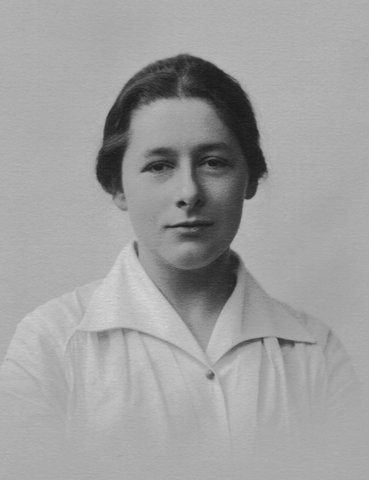
Nephrologists are familiar with Dorothy Russell because in 1930, long before renal biopsies, she published a monograph in which she classified cases of glomerulonephritis into mitis, intermedia, and gravis. But in the world at large she is better remembered for her research into cancer and neurologic diseases.
Born in Sydney in 1895, Dorothy Stuart Russell was sent as a child to live in England. She evidenced an early interest in science and at school claimed to “[know] more Botany than anyone in Cambridge.”1 When a shortage of doctors and medical students during World War I induced the London Hospital Medical College to reluctantly open its doors to women, she was admitted as one of thirty. The students were treated as second-class citizens, made to wear white coats which were not worn by men, “to distinguish them in lectures, presumably so that they could be either picked on for questioning or ignored.”2
After qualifying in medicine in 1922, Russell studied pathology in England and later with distinguished investigators in Boston and Montreal. During World War II, she worked as neuropathologist at a new military hospital in Oxford, and in 1946, she became the first woman in Western Europe appointed to a chair of pathology. She pioneered growing tumor cells in culture and studied the pathogenesis of cerebral tumors and abscesses, of post-traumatic cerebral cysts, the effects of antiseptics on brain tissue, and the use of new materials for cranioplasty. In addition to publishing a classical textbook on neuropathology, she worked on the classification of brain tumors and published papers on hydrocephalus, Friedreich’s ataxia, carcinomatous neuropathy and myopathy, organic mercury poisoning, the effects of severing the pituitary stalk, vascular malformations, subacute sclerosing panencephalitis, acute disseminated encephalomyelitis, and acute hemorrhagic leucoencephalitis.2,3 Excelling as an educator, she mentored numerous young investigators who later carried out excellent scientific work.
Some years after she retired, she recalled that as an academic chair she had too much of her time taken up by committee and administrative work.1 Also, reflecting that indeed there was an intrinsic conflict between time spent teaching and time spent in the laboratory, she recalled knowing a brilliant internationally-known researcher whose lectures were “well-nigh incomprehensible” because he could seldom complete a sentence.1 Were students being burdened with having to learn too many unnecessary details, she mused, also questioning the benefits of travel to scientific meetings but admitting that “professional travel can be immensely stimulating” and advocating the adoption of sabbatical years.2 She retired in 1960 and allowed it to be known only after her death in 1983 that she had suffered from epilepsy and that this needed not be a bar to academic success.2
References
- Geddes JF. A portrait of “The Lady”: A life of Dorothy Russell. J Roy Soc Med 1997;90:455.
- Russell DS. Personal View. BMJ July 27, 1968;1:248.
- Rubenstein LJ. Surgical Neurology 1976;5:267.

Leave a Reply